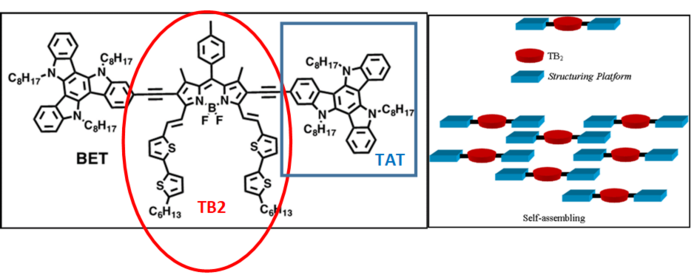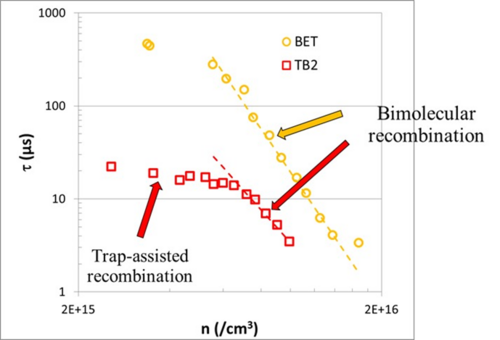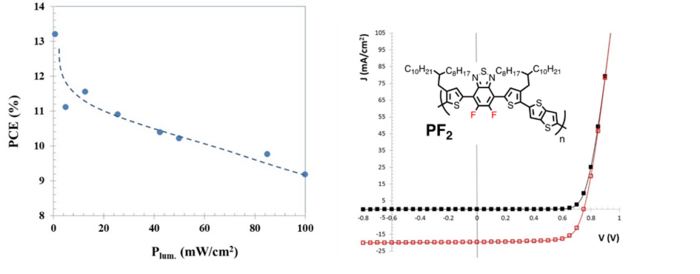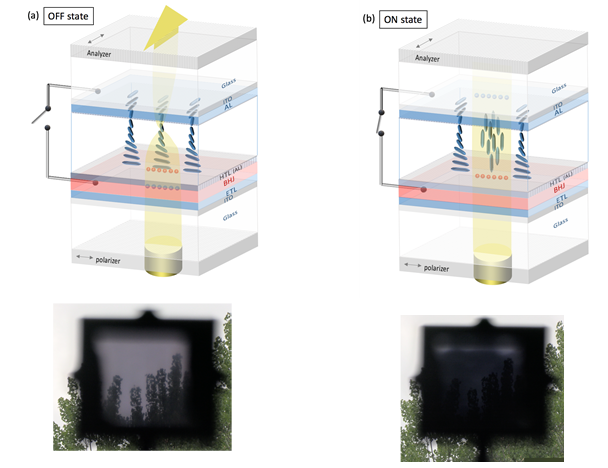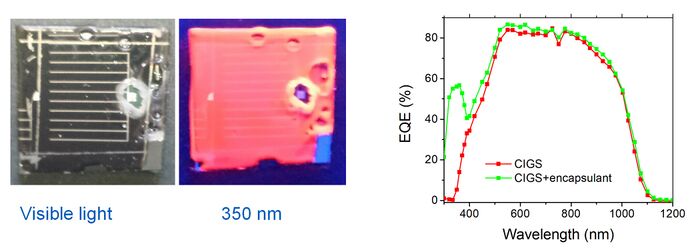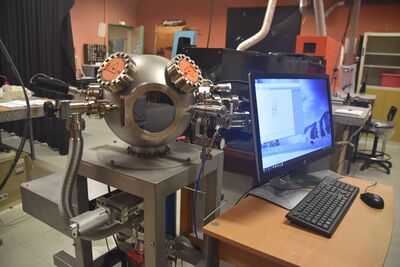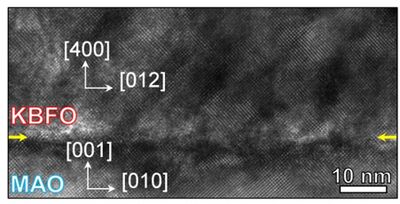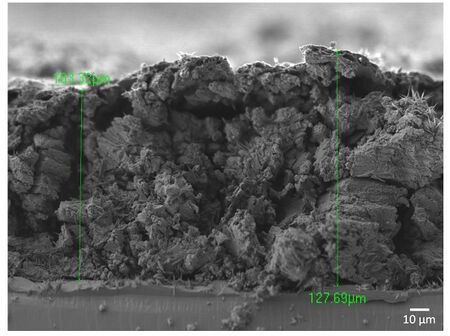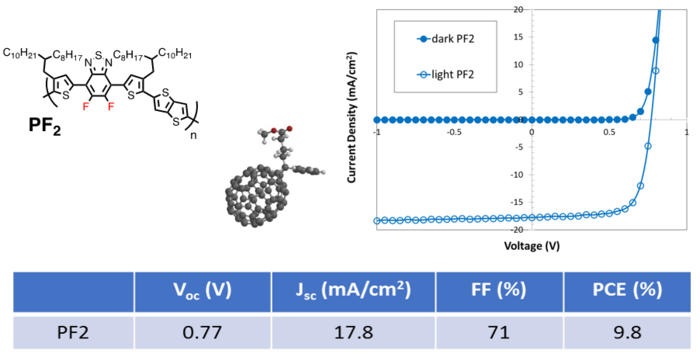« Materials and photovoltaic components » : différence entre les versions
Aucun résumé des modifications |
Aucun résumé des modifications |
||
| Ligne 103 : | Ligne 103 : | ||
| style="width: 10%; | |
| style="width: 10%; | |
||
''' Persons involved: P. |
''' Persons involved: P. Lévêque, T. Heiser, S. Fall''' <br> |
||
| Ligne 208 : | Ligne 208 : | ||
| style="width: 10%; | |
| style="width: 10%; | |
||
''' Persons involved: T. Fix |
''' Persons involved: T. Fix, G. Ferblantier, D. Muller, A. Slaoui ''' <br> |
||
| Ligne 233 : | Ligne 233 : | ||
| style="width: 10%; | |
| style="width: 10%; | |
||
''' Persons involved: T. Fix |
''' Persons involved: T. Fix, D. Muller, A. Slaoui ''' <br> |
||
| Ligne 259 : | Ligne 259 : | ||
| style="width: 10%; | |
| style="width: 10%; | |
||
''' Persons involved: P. |
''' Persons involved: P. Lévêque, T. Heiser, J. Wang, S. Fall''' <br> |
||
Version du 14 juin 2022 à 15:28
Although the contribution of photovoltaics to the production of renewable energy is still largely due to the traditional crystalline silicon sector, many so-called "emerging" technologies are the subject of research projects around the world and aim to reduce the cost of photovoltaics and widen its field of application. In this context, the development of new thin-film materials with outstanding optical, electronic and mechanical properties plays a key role. Our team participates in these efforts by developing new inorganic and organic materials, studying their fundamental properties, and implementing them in the manufacturing of innovative photovoltaic components.
Developed topics
Organic photovoltaic cells
Organic solar cells are part of the emerging photovoltaic technologies whose very specific characteristics (flexibility, manufacturing at room temperature, semi-transparency, etc.) should make it possible to broaden the integration of photovoltaics in various fields. The team's activities are mainly aimed at improving photovoltaic conversion efficiency, the stability of organic cells and reducing the environmental impact of their manufacture. We also carry out more fundamental studies on the relationships between the molecular structure and the electronic or photovoltaic properties of new molecules.
This work is carried out in close collaboration with the consortium STELORG, which brings together around fifteen researchers in chemistry, physico-chemistry and component physics from four Strasbourg research institutes, complementary skills.
Our current research projects on this theme are illustrated by a few examples below.
Molecular structure and optoelectronic properties
|
Persons involved: T. Heiser, P. Lévêque, E. Martin, E. Steveler
|
The efficiency of organic photovoltaic (OPV) devices is currently limited by the short lifetime (< 1 ns) and short diffusion length (a few nm) of the photogenerated excitons. The development of organic materials with long diffusion lengths (typically > 10 nm) is therefore proving to be a particularly interesting way to improve charge transport and should lead to an improvement in OPV performance. In thin films, the dynamics of excitons and charge carriers, crucial for the operation of OPV devices, is controlled by intermolecular interactions and depend in a non-trivial way on the molecular organization in the solid state.
In this context, we are studying families of organic molecules with different side chains and heat treatment conditions, allowing us to obtain molecular structures and various crystalline orders (liquid crystal, needles or crystalline grains...). We are thus studying the influence of molecular organization and self-assembly on the dynamics of excitons in order to improve the performance of OPV devices. [1,2]
[1] J. Jing, E. Steveler, N. Leclerc, A. D'Aléo, B. Heinrich, W. Uhring, T. Heiser, Proc. SPIE 12149, Organic Electronics and Photonics: Fundamentals and Devices III, 1214904 (2022).
[2] J. Jing, E. Steveler, N. Leclerc, B. Heinrich, W. Uhring, T. Heiser, Proc. SPIE 11365, Organic Electronics and Photonics: Fundamentals and Devices II; 113650F (2020).
An atomic-scale modelling activity of exciton diffusion in organic semiconductors has recently been initiated, using first-principles molecular dynamics, based on DFT, in order to strenghten the understanding issue from experiments on this phenomenon.
The addition of a structuring platform (TAT)[1] on either side of an effective motif (TB2)[2] makes it possible to act on the molecular arrangement in the solid state to improve the dynamics of charge carriers and ultimately the conversion efficiency of organic solar cells.[3]
[1] T. Bura, N. Leclerc, R. Bechara, P. Lévêque, T. Heiser, R. Ziessel, Adv. Energy Mater. 3 (2013) 1118.
[2] T. Bura, N. Leclerc, S. Fall, P. Lévêque, P. Retailleau, S. Rihn, A. Mirloup, R. Ziessel, J. Am. Chem. Soc. 134 (2012) 17404.
[3] N. Leclerc, I. Bulut, Q. Huaulmé, A. Mirloup, P. Chávez, S. Fall, A. Hébraud, S. Méry, B. Heinrich, T. Heiser, P. Lévêque ChemSusChem. 10 (2017) 1878.
Research of alternative, non-toxic solvents, by reverse engineering
|
Persons involved: T. Heiser, P. Lévêque Collaborations: Sophie Thibaud-Roux, Ivonne Rodrigues-Donis et Vincent Gerbaud, ENSIACET (Toulouse) |
The toxicity of halogenated solvents usually used to solubilize 𝜋-conjugated materials is a major obstacle to the industrialization of organic photovoltaic modules. As a result, the search for alternative solvents, less toxic and potentially biosourced, is today an important issue for the organic sector. In this context, we have recently shown that reverse molecular engineering, which consists in identifying by numerical means solvents presenting a set of target properties, is a promising approach. In collaboration with the teams of Sophie Thibaud-Roux, Ivonne Rodrigues-Donis and Vincent Gerbaud from ENSIACET in Toulouse, we were able to apply the computer-aided design tool, IBSS®, developed by V. Gerbaud, to the problem solvents.
This methodology allowed us in particular to identify several alternative solvents for the manufacture of solar cells based on poly(3-hexylthiophene), a reference organic polymer, without loss of performance.
Jing Wang, Ivonne Rodriguez-Donis, Sophie Thiebaud-Roux, Olzhas A. Ibraaikulov, Nicolas Leclerc, Patrick Lévêque, Vincent Gervaud, Markus Kohlstädt, Thomas Heiser, Molecular Systems Design & Engineering, 7 (2022) 182
Ternary mixtures for improved yield and/or stability
|
Persons involved: P. Lévêque, T. Heiser, S. Fall
|
Study ternary mixtures in the active layer to increase the photovoltaic conversion efficiency and/or device stability. Starting from an electron donor polymer (PF2), synthesized within the Strasbourg consortium STELORG, conversion yields greater than 12% were obtained by using two electron donor polymers (PF2 and J71) and an electron acceptor. underived fullerene (Y6) electrons from complementary absorption spectra. [1] By using an electron donor polymer (PF2) and two acceptors (PC71BM and EH-IDTBR), good stability under illumination was observed. A better understanding of the influence of ternary mixtures in terms of solid-state structure and tuning of electronic boundary levels is a lock to be lifted in order to jointly obtain high yields and sufficient stability.
[1] X. Ma , Q. An , O. Ibraikulov, P. Lévêque, T. Heiser, N. Leclerc , X. Zhang , F. Zhang, Journal of Materials Chemistry A, 8 (2020) pages 1265.
Organic photovoltaics for “indoor” applications
|
Persons involved: P. Lévêque, S. Fall
|
Organic photovoltaic cells absorb particularly in the wavelength range of artificial lighting and often see their efficiency increase when the illumination decreases. The purpose of this theme is to show the potential of organic solar cells to power connected objects located inside buildings. Electronics allowing sober energy management have been developed specifically for this application.
Photovoltaic optical modulators based on liquid crystals and organic semiconductors
|
Persons involved: T. Heiser, S. Fall, Y. Lin
|
The integration of organic semiconductor materials into liquid crystal optical modulators offers new functionalities to these devices. Indeed, these "hybrid" modulators have by construction a behavior sensitive to the incident light intensity and can therefore be used as photorefractive elements [1] or as dynamic glasses (similar to photochromic or electrochromic glasses, whose tint is adjustable ).
In this context, we have recently proposed a new concept of dynamic glass, called PSLM (for "photovoltaic spatial light modulator") [2] (see principle diagram). The operation of a PSLM is energy self-sufficient, easily controllable by the user and benefits from a response time of less than one second. Our current work aims to increase the transparency in the "clear" state of PSLMs, to optimize their spectral response according to the targeted applications and to improve their manufacturing method (increase in size, robustness, etc.).
[1] T. Regrettier, M. Kaczmarek, G. D'Alessandro, T. Heiser, "Integrated organic donor-acceptor bulk heterojunctions for self-activated liquid crystal light modulators.," Proc. SPIE 10735, Liquid Crystals XXII, 1073514 (14 September 2018)
[2] T. Heiser, T. Regrettier, M. Kaczmarek, « Liquid Crystal Spatial Light Modulator », US 2020/0233248 A1
Downshifting and downconversion for solar cells
|
Persons involved: T. Fix, G. Ferblantier, A. Slaoui
|
Increasing the conversion efficiency requires the complete use of the solar spectrum by the conversion layer. One of the possible solutions is impurity cells or intermediate band cells, in which a modification of the active part of the cell is necessary. Another original idea consists in the modification of the incident spectrum by energy conversion of its photons, either by downshifting (DS, one UV photon is converted into one visible or near-infrared photon), down-conversion (DC, one UV photon is converted into two visible or near-infrared photons) or upconversion (UC, two infrared photons are converted into one visible photon).
We investigate several downshifting and downconversion systems, either in the form of bulk, oxide thin films, and polymers functionalized with coordination complexes.
So far, an increase of 0.8 points in the efficiency of CIGS solar cells has been demonstrated by ICube, IPHC and IPVF thanks to the downshifting concept (example from 13.5 to 14.3 % conversion efficiency).
Novel oxides for photovoltaic absorbers
|
Persons involved: T. Fix, G. Ferblantier, D. Muller, A. Slaoui
|
Inorganic photovoltaic thin film technologies are mainly based on CdTe, amorphous Si and CuInxGa1-xSe2 (CIGS). A major recent breakthrough was obtained with hybrid perovskite solar cells, with conversion efficiencies higher than 20% using a very small area but not stabilized. Another possible path is the use of metal oxides based on abundant elements, that are generally stable and non-toxic.
We use pulsed laser deposition (PLD) to investigate novel oxide absorbers for solar cells.
The oxides investigated must have a rather low bandgap to match the solar spectrum. The oxides investigated are LaVO3, Cu2O, KBiFe2O5, h-TbMnO3 and Bi2FeCrO6. For the latter, ferroelectricity is established and plays an important role in the photovoltaic properties. Ferroelectric materials are under intense scrutiny for photovoltaic applications, following the demonstration of above 8% conversion efficiency in FE-based solar cells. In these cells, there is no need for a p-n junction because the electric polarization from ferroelectricity is responsible for the charge separation.
Silicon clathrate films
|
Persons involved: T. Fix, D. Muller, A. Slaoui
|
Common forms of elemental silicon (mono-, multi-crystalline and amorphous) play a foundational role in the field of electronics and the underlying technologies are well mastered. A promising alternative is based on an allotrope of silicon: silicon clathrates. They are similar to carbon fullerenes as they form hollow spheres. ICube is one of the few laboratories that can elaborate such material in the form of films. The electronic and optical properties of some of these clathrates are strongly different to the “standard” silicon as they can provide a direct bandgap, paving the way for novel applications in electronics and optoelectronics. Applications in sodium-ion batteries are also emerging. Not only the size of the clathrates but also the presence of doping atoms can dramatically modify their properties. Ion implantation available at ICube is used to modify the properties of the clathrates.
Archives: old topics
Towards the industrialization of organic photovoltaics
|
Persons involved: P. Lévêque, T. Heiser, J. Wang, S. Fall
|
An electron-donor polymer designed and synthesized at the Cronenbourg campus (PF2) gives high conversion efficiencies (about 10%) when mixed with the PC71BM electron acceptor. This project aims to demonstrate its industrial potential by developing several approaches:
- Polymer production at the gram scale or more,
- Avoid halogenated solvents for the wet deposition of the active layer,
- Avoid rare materials (e.g. Indium) when making transparent conductive electrodes,
- Go from laboratory scale (12 mm2) to large areas (> 60 cm2).





